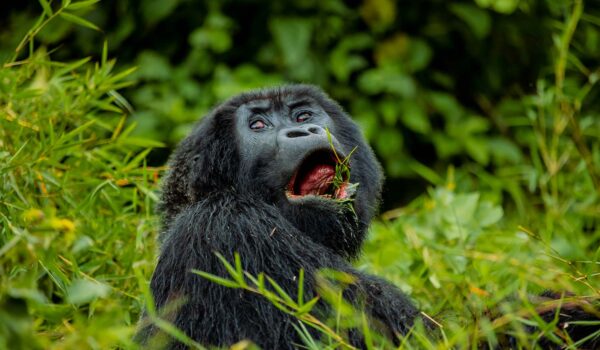Birds in Uganda
Uganda is home to a remarkable variety of bird species, attracting nature enthusiasts and birdwatchers from all over the globe. More than 1,000 bird species find perfect homes in its diverse geography, which includes everything from large savannahs and marshes to deep rainforests and mountain ranges. With about half of Africa’s bird species found there, Uganda is one of the best places in the world to go birding.
The African Grey Crowned Crane is one of Uganda’s most recognizable birds. This elegant bird, with its characteristic crest of golden feathers, has become a Ugandan national emblem. It often inhabits marshes and open grasslands, where spectators are delighted by its graceful mating rituals. The Grey Crowned Crane is now protected in a number of Ugandan national parks, but regrettably, habitat degradation has made it vulnerable.
Birdwatchers may come upon uncommon species like the African Green Broadbill in the foggy heights of the Bwindi Impenetrable Forest. This colorful bird, which has blue and green colors, is difficult to see because of its unique ecological requirements and elusiveness. Other uncommon montane forest species seen in Bwindi include the Shelley’s Crimsonwing and the Rwenzori Turaco, which both add to the forest’s standing as a hotspot for biodiversity.
It is common to see the Shoebill Stork, one of the most unusual birds in the world, in Uganda’s vast wetlands, such as Mabamba Bay on Lake Victoria. Known for its enormous shoe-shaped bill and ancient look, the Shoebill often enthralls birdwatchers. It hunts for lungfish while wading through the papyrus swamps, providing those lucky enough to see its actions with an experience they will not soon forget.
Semi-arid savannahs in Uganda’s east and north are home to species like the Secretary Bird and Kori Bustard that are suited to drier temperatures. For this and other species, like as the Abyssinian Ground Hornbill, Kidepo Valley National Park, located in the semi-arid northeast, provides a special habitat. These birds are renowned for their amazing hunting abilities and eye-catching looks, which enhance the area’s allure.
In addition to indigenous birds, Uganda is home to a variety of migratory species from Europe and Asia during certain periods of the year due to its advantageous location along migratory pathways. Among the migratory species that contribute to Uganda’s bird richness are the European Bee-eater and the Black Kite, which come here to avoid colder temperatures.
Beyond specific species, Ugandan birds play an important role in the ecology. They support the equilibrium of natural systems by serving as pollinators, seed dispersers, and pest controllers. In Uganda, a lot of groups see birds as vital components of their natural heritage and as icons in their folklore. While taking advantage of the financial benefits that birdwatching tourism offers, local communities and conservation groups strive to preserve these avian gems via ecotourism.
The astonishing variety of birds seen in Uganda is a testament to both the natural beauty of the country and the value of conservation in protecting these amazing species for coming generations.
Best time for bird watching in Uganda
Uganda is ideal all year round for birders, particularly because the resident species are the major attraction. The most important element to consider is the climate. Uganda has a lot of rain. Roads and woodland paths are in bad conditions which in most cases causes hinderance to bird watching experience.
Because of much rain, which brings in plenty of food, late May through September is often the ideal time of year to see birds. Although the rains may still be too severe from mid-April to mid-May, May and June are the major breeding seasons in Bwindi Impenetrable and Mgahinga Gorilla National Parks, which are important locations for the Albertine Rift endemics, or birds that are unique to the Albertine Rift. It is unbearably hot in the north, particularly at Murchison Falls National Park, but only in February and early March is Toro-Semliki Wildlife Reserve comparatively dry. Since the north is not yet excessively hot and the south experiences less rain, December and January are also favorable months. The dry season, which runs from June to August and December to February, is also the ideal time of year to track primates and wildlife viewing in the savannah parks.

